F1 Mini Goldendoodle: Everything You Need to Know
A harmonious blend of intelligence, charm, and hypoallergenic appeal has enabled F1 Mini Goldendoodles to swiftly climb the popularity charts. But are these dogs really the friendly, hypoallergenic, easy-to-live-with pup that’s advertised?
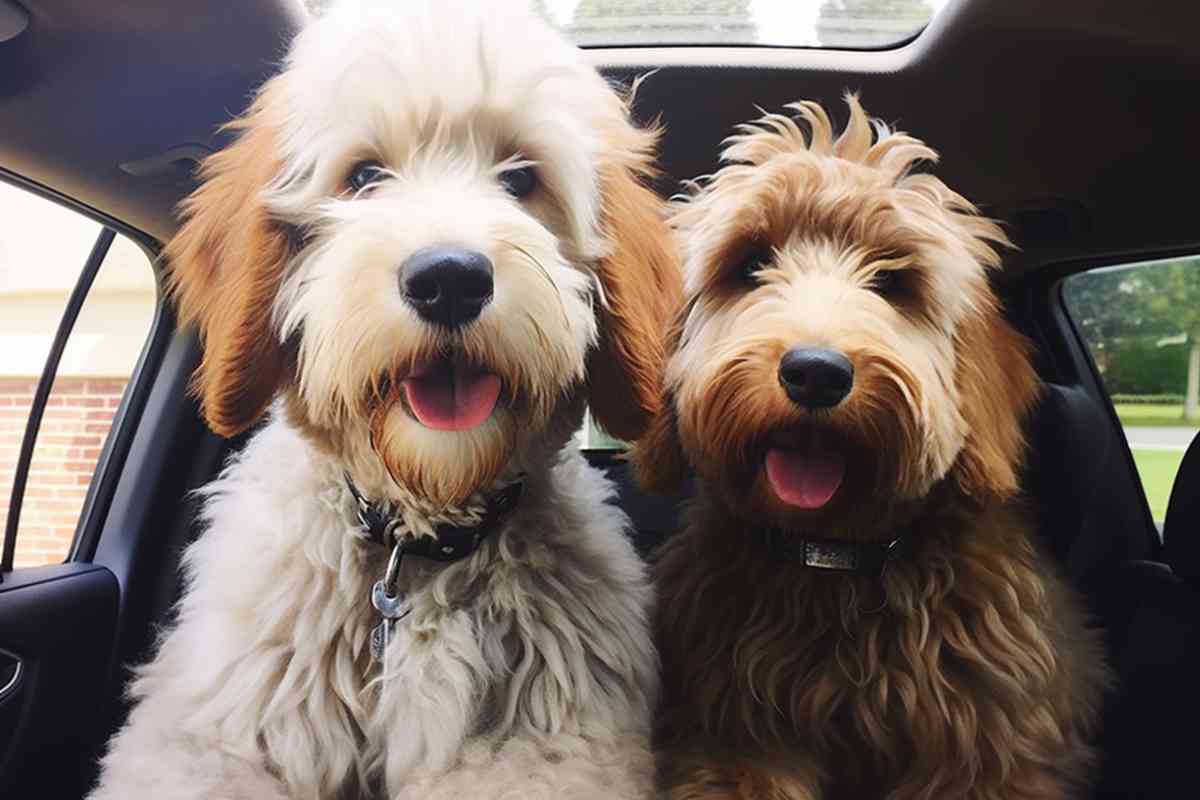
F1 Mini Goldendoodle: Everything You Need to Know
The F1 Mini Goldendoodle, a cross between a Golden Retriever and a Miniature Poodle, boasts a blend of intelligence, charm, and a hypoallergenic coat. Their curly hair traps dander, reducing allergens, but no dog is truly hypoallergenic. They inherit traits from both parents, resulting in varied traits. Their coat, prone to matting, requires regular grooming. Energetic and smart, they thrive on mental and physical stimulation.
From defining what an F1 Mini Goldendoodle is, to explainig how hybrid vigor contributes to its health and how likely it is to inherit that coveted no-shed coat, here’s everything you need to know about the F1 Mini Goldendoodle.
Wondering what the F2 Goldendoodle is all about?
Here’s a thorough guide to the differences between F1 and F2 Goldendoodles to help you decide which is right for you.
Physical Traits and Appearance
The F1 Mini Goldendoodle is a crossbreed between a purebred Golden Retriever and a Miniature Poodle. The standard-sized Golden Retriever typically weighs between 55 to 75 pounds and stands about 20 to 24 inches tall at the shoulder. On the other hand, the miniature Poodle usually weighs between 10 to 15 pounds and stands around 10 to 15 inches tall.
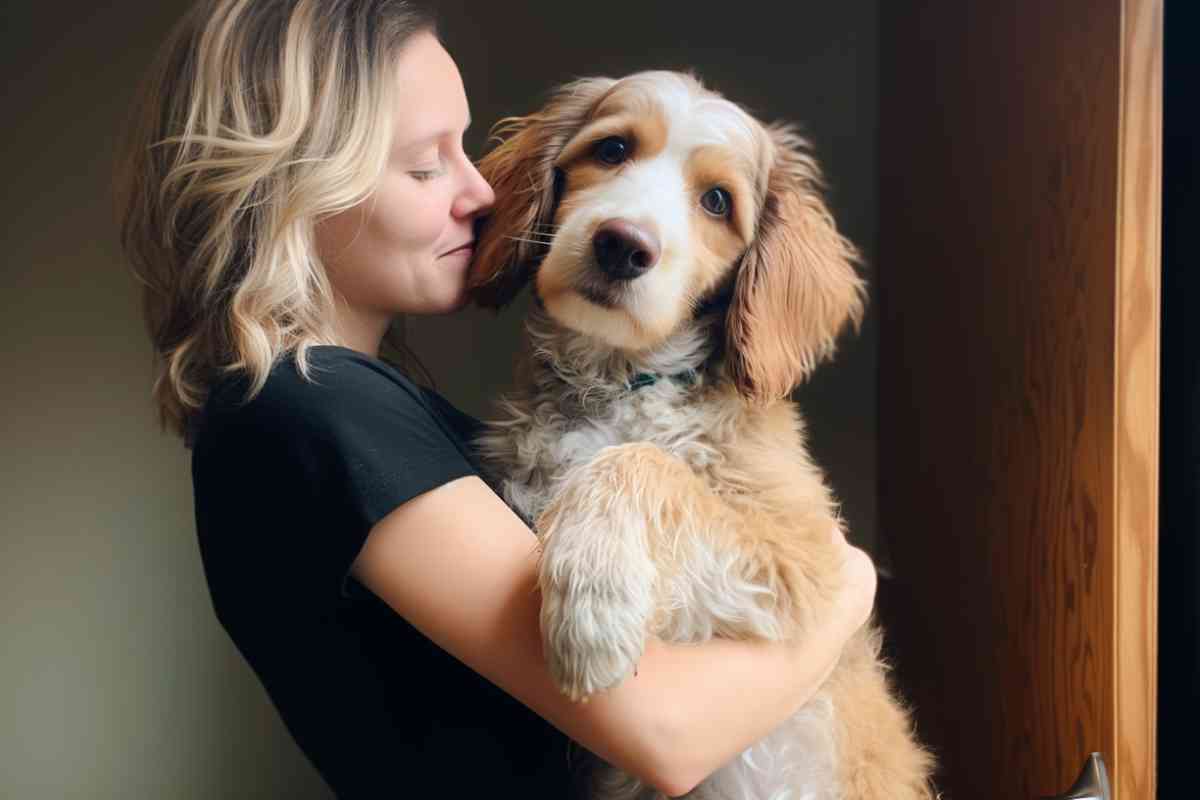
Predicting the Size of an F1 Mini Goldendoodle
An F1 mini Goldendoodle, being a first-generation cross between these two breeds, will likely inherit size traits from both parents. This means the puppy’s size will probably fall somewhere between the sizes of its parents.
So, you might expect an adult F1 mini Goldendoodle to weigh anywhere from 25 to 45 pounds and stand around 15 to 20 inches tall. However, genetics can be unpredictable. Some puppies might lean more towards the Golden Retriever’s size, while others might be closer to the miniature Poodle’s size
Even within purebred dogs, there’s genetic variability. So, two Golden Retrievers or two miniature Poodles might have different genes influencing size. This variability can affect the size of their Goldendoodle offspring.
F1 Mini Goldendoodle Coat Appearance:
The F1 Mini Goldendoodle comes in a variety of colors, including cream, apricot, red, chocolate, black, and parti-colored. The coat type can be either curly or wavy, and it can be straight in some cases. The curliness of the coat can vary depending on how many genes the dog gets from the Poodle parent.
- Basic Coat Colors:
- When breeding a poodle with a golden retriever, the primary coat colors of the poodle (black, white, apricot, and red) play a significant role in determining the Goldendoodle’s coat color.
- Golden Retrievers predominantly have a coat color influenced by the phaeomelanin pigment, which is responsible for red and yellow shades. So, when combined with a poodle’s genetics, the resulting F1 Mini Goldendoodle might have a coat color ranging from cream to apricot to red, depending on the poodle parent’s dominant color genes.
- Gene Dominance:
- Since the coat color genes in poodles are incompletely dominant, the expression of one gene can be influenced by another. This means the Goldendoodle’s coat color isn’t just a straightforward blend of its parents’ colors.
- For instance, if a white poodle is bred with a golden retriever, the resulting Goldendoodle might not necessarily be cream. Depending on the genes, the puppy could be white, cream, apricot, or even have patterns.
- Patterns and Markings:
- If the poodle parent has genes for parti-colors or phantom patterns, the Goldendoodle might inherit these patterns. A Goldendoodle with a phantom pattern, for example, might have a primary coat color like cream or apricot but have distinct darker markings on the head and legs.
- Similarly, if the poodle parent carries the “sable” gene, the Goldendoodle might have a coat with tipped hairs, giving it a unique appearance.
- Fading Over Time:
- If the poodle parent carries the “fading” gene, the Goldendoodle’s coat might lighten as it ages. So, a puppy that starts with a rich apricot coat might fade to a lighter cream as it matures.
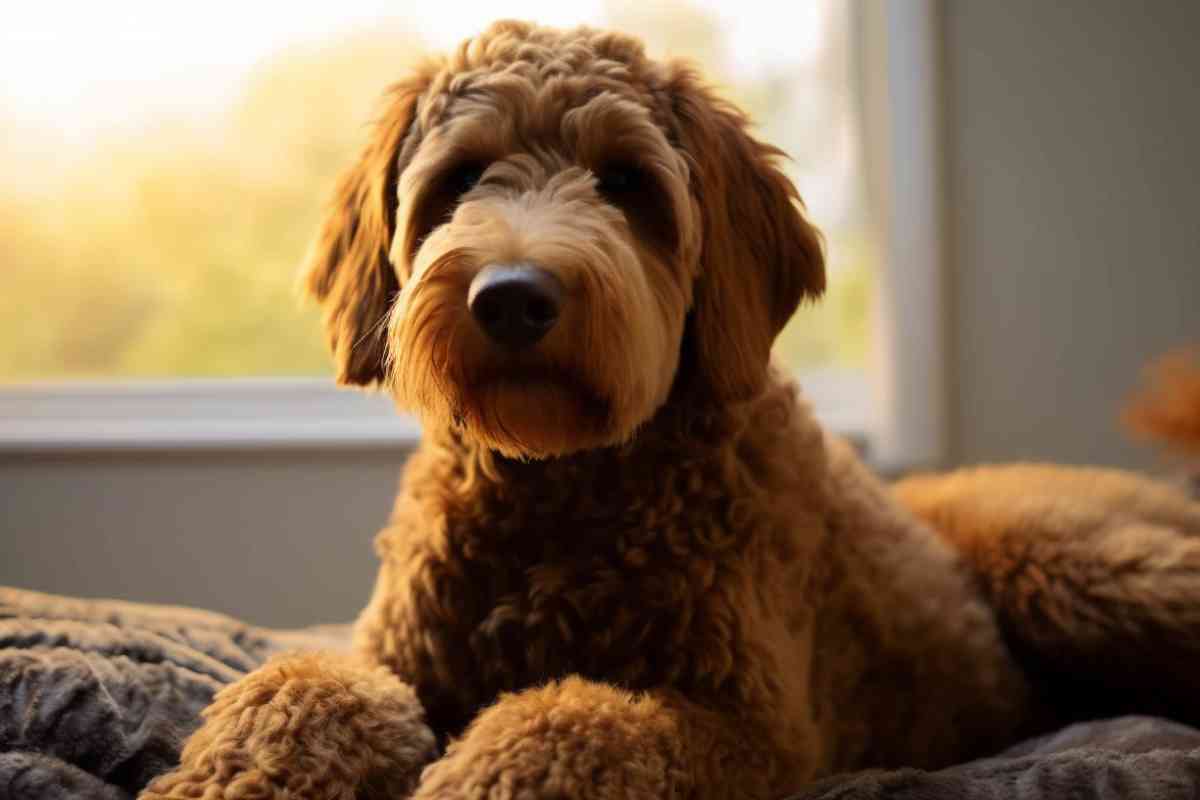
Are F1 Mini Goldendoodles Hypoallergenic?
The F1 Mini Goldendoodle’s coat, often touted as “hypoallergenic,” has become a significant selling point for many prospective dog owners, especially those with allergies. But what does the science say, and how hypoallergenic are these adorable dogs?
While some breeders claim that the Goldendoodle is a hypoallergenic dog, there’s no scientific evidence to prove that any dog breed is entirely hypoallergenic. A study titled “Dog allergen levels in homes with hypoallergenic compared with non-hypoallergenic dogs” highlights the lack of substantial evidence supporting the claim that certain dog breeds are hypoallergenic. Another research, “Can f 1 levels in hair and homes of different dog breeds: Lack of evidence for the classification of certain dog breeds as being hypoallergenic”, found that so-called hypoallergenic dogs had higher Can f 1 levels in hair and coat samples than control breeds. This suggests that the classification of certain breeds as hypoallergenic might be misleading.
Why the Curly Coat Matters
The curlier the hair, the less likely it is to shed around the house. When hair sheds, it often carries with it tiny skin cells known as dander, which is a common allergen for many people.
The thick, curly hair of the Goldendoodle tends to trap these skin cells, reducing the amount of dander released into the environment. This characteristic can make them a better choice for allergy sufferers compared to breeds that shed more profusely.
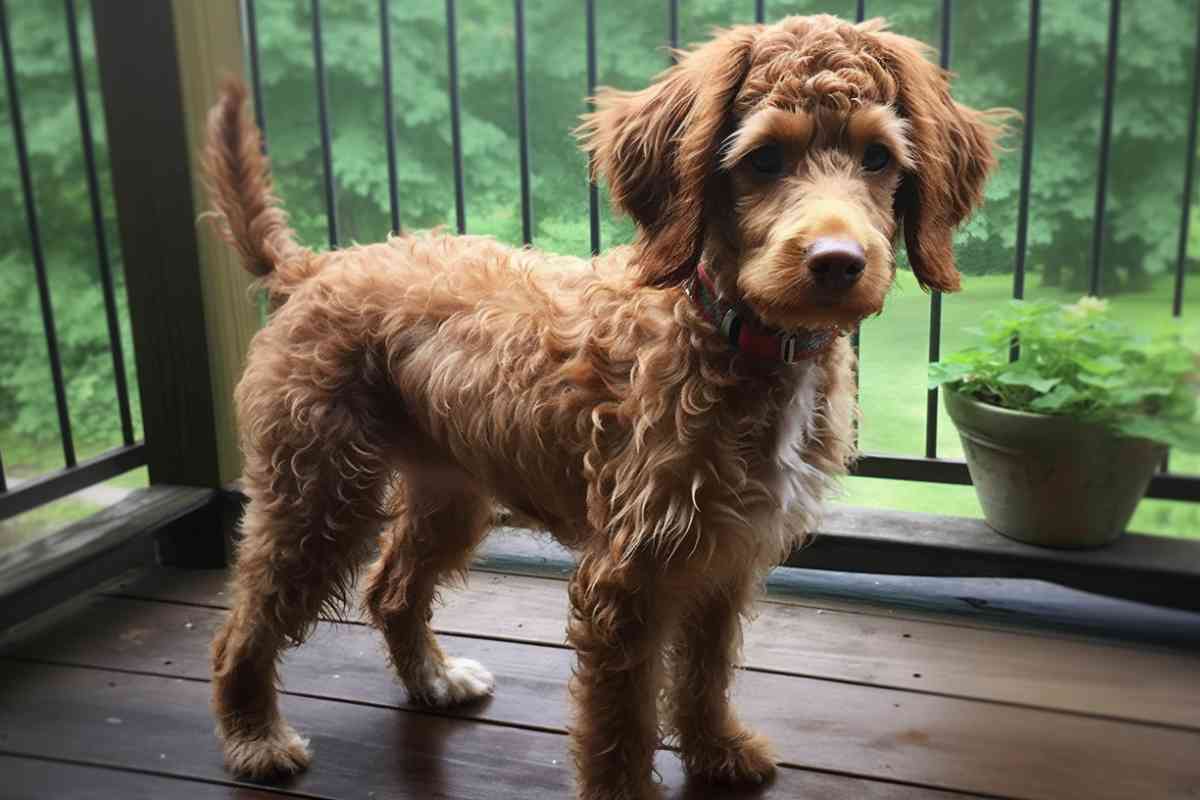
Size and Dander
The size of a dog can influence the amount of dander it produces. Smaller dogs, like the Mini Goldendoodle, naturally produce less dander than larger breeds simply because there’s less skin surface area. This can be another advantage for those with allergies.
No Truly Hypoallergenic Dog:
It’s essential to understand that no dog is truly hypoallergenic. Different individuals can have varying sensitivities, and what might trigger an allergic reaction in one person might not in another.
The best approach for potential dog owners with allergies is to spend time with the specific dog they’re considering to see if any allergic reactions occur.
Temperament and Personality
Miniature Poodle Personality: The Miniature Poodle, as described by the AKC, stands out for its remarkable intelligence and elegance. These dogs are not just about looks; they’re active, proud, and incredibly sharp-witted. Their keen intellect is evident in their participation in various activities, especially when it comes to advanced obedience competitions. Have you ever seen a Miniature Poodle in action? Their agility and responsiveness are truly commendable.
Golden Retriever Personality: On the other hand, Golden Retrievers, another favorite according to the AKC, are the epitome of friendliness, intelligence, and devotion. Their amiable nature is hard to miss. These dogs are not just friendly; they’re consistently reliable and exude trustworthiness. Their behavior is often a reflection of their eagerness to please those around them. It’s no wonder they’re among the most loved breeds worldwide.
F1 Mini Goldendoodle Personality: Now, imagine combining these two distinct personalities. The result? The F1 Mini Goldendoodle. This breed, a delightful mix of the Miniature Poodle and the Golden Retriever, often showcases a harmonious blend of its parents’ traits.
This could mean a dog that’s both astute and dedicated, merging the Poodle’s refined nature with the Golden Retriever’s affable demeanor. But here’s where it gets interesting. As highlighted in the Genetic Characterization of Dog Personality Traits study, behavioral traits in dogs are largely polygenic. This intricate genetic play implies that these traits are influenced by a multitude of genes.
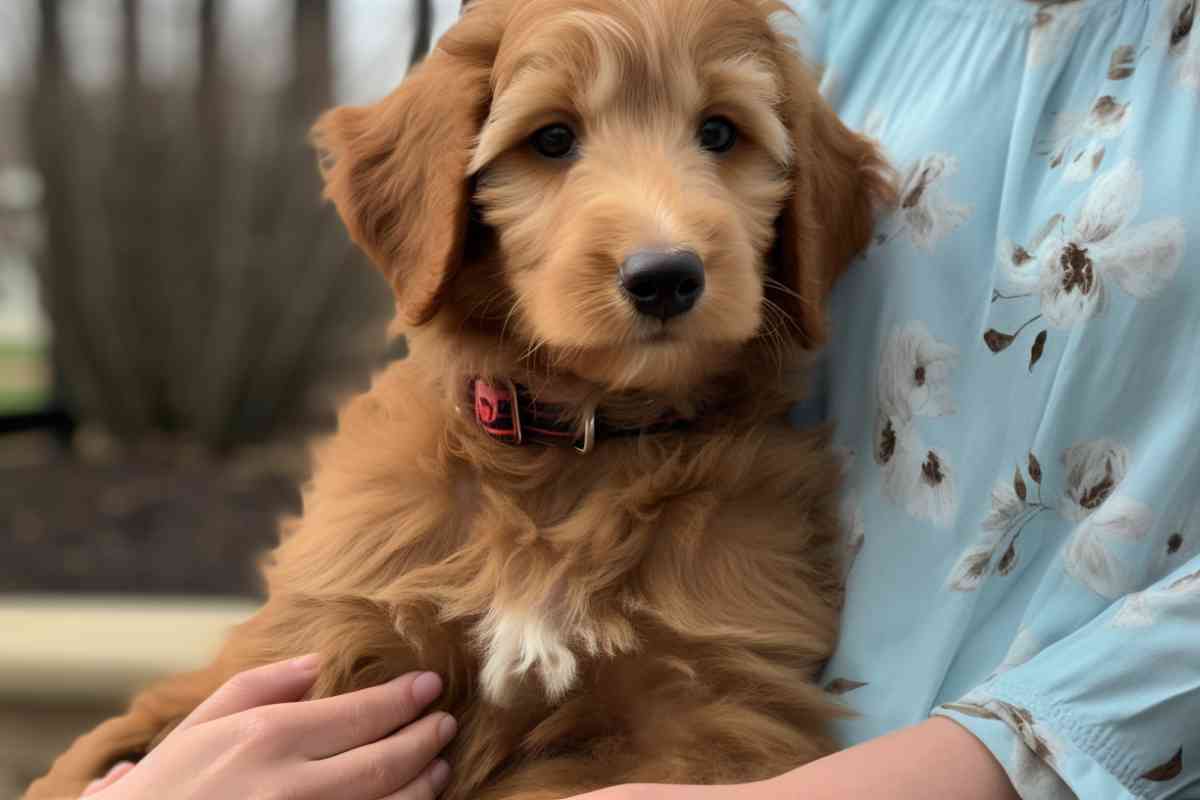
So, while some F1 Mini Goldendoodles might lean more towards the Poodle’s characteristics, others might resonate more with the Golden Retriever’s traits. And let’s not forget the pivotal role of non-genetic factors. The environment in which the dog is raised, its experiences, and its upbringing can significantly mold its behavior, sometimes even overshadowing genetic predispositions.
Remember, while genetics provide a foundation, the environment and individual experiences are equally influential in shaping a dog’s personality.
Health and Lifespan
Golden Retriever Health Concerns: Golden Retrievers are predisposed to certain health issues, including:
- Hip Dysplasia: A genetic condition where the hip joint doesn’t develop properly, leading to arthritis.
- Elbow Dysplasia: Similar to hip dysplasia but affects the elbow joint.
- Heart Diseases: Including subvalvular aortic stenosis, a congenital heart defect.
- Eye Conditions: Such as cataracts and progressive retinal atrophy.
- Cancer: Golden Retrievers have a higher risk of certain cancers, including hemangiosarcoma and lymphoma.
Poodle Health Concerns: Poodles, regardless of size, can also have specific health issues:
- Hip Dysplasia: Like Golden Retrievers, Poodles can suffer from hip dysplasia.
- Eye Disorders: Including progressive retinal atrophy.
- Von Willebrand’s Disease: A blood clotting disorder.
- Addison’s Disease: A condition where the adrenal glands don’t produce enough hormones.
- Bloat: A life-threatening condition where the stomach fills with gas and twists.
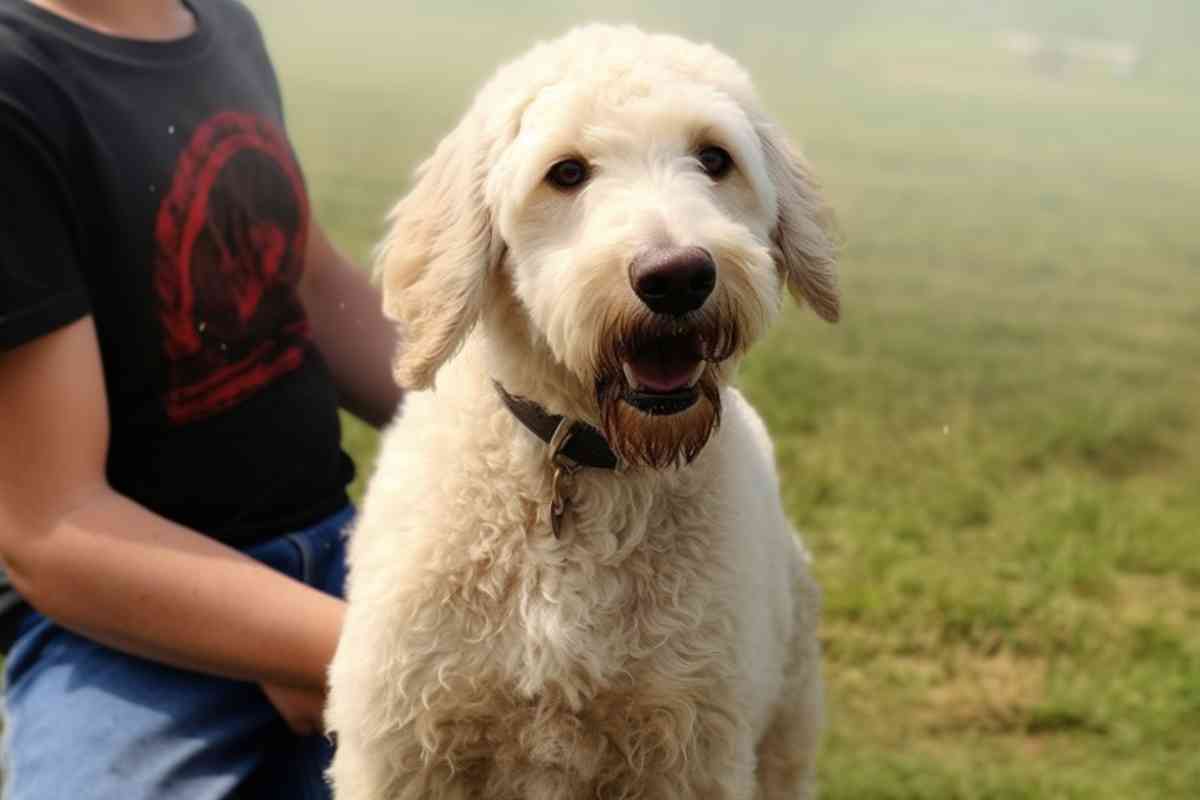
F1 Mini Goldendoodle Health Concerns: Given that the F1 Mini Goldendoodle is a cross between the Golden Retriever and the Poodle, it can inherit health issues from both breeds. Here are potential concerns:
- Joint Issues: Due to the size difference between the Golden Retriever and the Miniature Poodle, Miniature Goldendoodles might be prone to hip or elbow dysplasia.
- Heart, Eye, and Blood Disorders: As both parent breeds have predispositions to these issues.
- Bloat: Both breeds are at risk, making it a concern for their offspring.
- Cancer: Given the Golden Retriever’s predisposition, it’s something to monitor in Mini Goldendoodles.
It’s essential to understand that while these are potential health concerns, not every F1 Mini Goldendoodle will experience these issues. Regular veterinary check-ups, a balanced diet, and proper care can help in early detection and management of these health problems.
Implications of Hybrid Vigor for F1 Mini Goldendoodles
The concept of hybrid vigor, as explored in the study “Hybrid vigour in dogs?”, has significant implications for crossbred dogs and doodles, especially the F1 Mini Goldendoodles. Let’s delve deeper into what this means for this particular breed:
Health Benefits
The primary allure of hybrid vigor is the potential health benefits it can confer to the offspring. Given the genetic makeup of both Golden Retrievers and Poodles, F1 Mini Goldendoodles stand to inherit a combination of genes that might make them less susceptible to certain inherited disorders that are common in either of the parent breeds. First generation Goldendoodles are often healthier than either their parents or their offspring. Non-shedding and size traits may also be a bit more predictable.
This genetic cocktail could result in a more robust immune system, better resistance to diseases, and overall enhanced vitality.
The Double-Edged Sword of Recessive Genes
While the benefits of hybrid vigor are noteworthy, it’s essential to tread with caution. F1 Mini Goldendoodles, despite their mixed lineage, can still be carriers of recessive genes from both the Golden Retriever and the Poodle.
While these genes might remain dormant and unexpressed in the F1 generation, they lurk in the background. If two F1 Mini doodles carrying the same recessive genes are bred, there’s a chance that their offspring might express these genes, leading to potential health issues. It’s a genetic gamble, and understanding this risk is crucial for responsible breeding.
Joint Issues – A Concern Rooted in Size Disparity
The size difference between the parent breeds is undeniable. Golden Retrievers are substantially larger than Miniature Poodles. This size disparity can lead to concerns when breeding, particularly regarding joint health. F1 Mini Goldendoodles might inherit a predisposition to joint issues, notably hip or elbow dysplasia. These conditions can be painful and debilitating, affecting the dog’s quality of life. It’s a concern that potential breeders and owners should be aware of, emphasizing the importance of regular veterinary check-ups and monitoring.
In essence, while the F1 Mini Goldendoodle might benefit from the best of both worlds due to hybrid vigor, it’s not immune to potential health challenges. A comprehensive understanding of genetics, combined with responsible breeding practices, can help navigate these challenges and ensure the well-being of these delightful dogs.
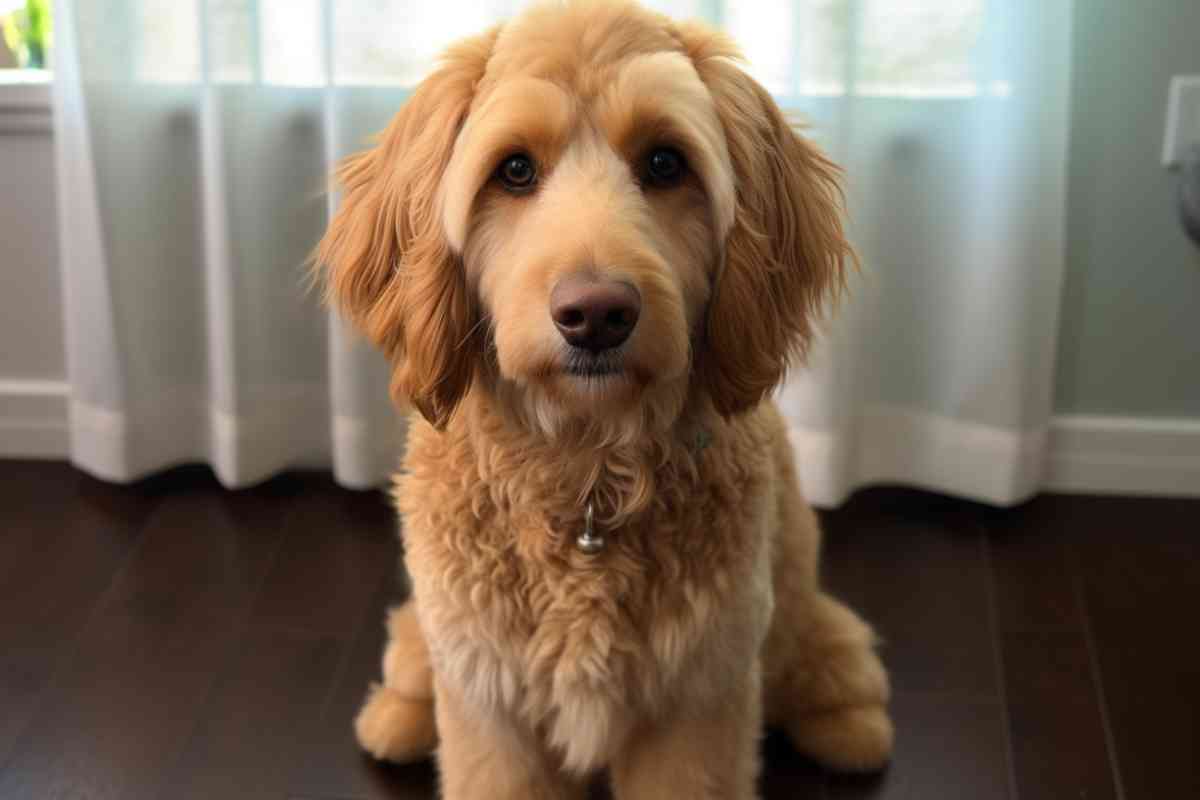
Coat and Grooming
The F1 Goldendoodle boasts a distinctive coat that’s a blend of its parent breeds: the Poodle and the Golden Retriever. While this mix often results in a beautiful, wavy, or curly coat that many owners adore, it also presents unique grooming challenges.
1. The Propensity for Matting: The combination of the Poodle’s curly hair and the Golden Retriever’s long, straight hair can lead to a coat that’s more prone to matting. Mats are tangled clumps of hair that can become tight and close to the skin. If not addressed, they can cause discomfort, skin infections, and other health issues for the dog.
2. Regular Brushing to the Rescue: To prevent the formation of mats, regular brushing is essential. And not just a surface brush-over; it’s crucial to brush the coat thoroughly down to the skin. This ensures that any tangles are caught and addressed before they develop into problematic mats. It’s a commitment, but one that’s necessary to maintain the health and beauty of the Goldendoodle’s coat.
3. The Shaving Solution: For those who find the regular brushing regimen too demanding, shaving the coat is an option. This eliminates the immediate need for meticulous grooming. However, many Goldendoodle owners are smitten with the breed’s characteristic wavy hair and might be reluctant to opt for a shave.
4. A Balanced Approach – Periodic Shaving: One compromise between maintaining the wavy coat and reducing grooming demands is to shave the coat and then allow it to grow out over a month or two. This approach can reduce the frequency of intensive brushing sessions. However, it’s essential to monitor the growing coat closely. As the hair grows out, there’s a risk of mats forming close to the skin, hidden beneath the top layers of hair. Regular checks and light brushing can help catch these hidden mats before they become a significant issue.
While the F1 Goldendoodle’s coat is undeniably gorgeous, it demands a level of care and attention that potential owners should be prepared for. Whether you choose regular brushing, shaving, or a combination of the two, the key is consistent and attentive grooming to ensure your Goldendoodle looks and feels its best.
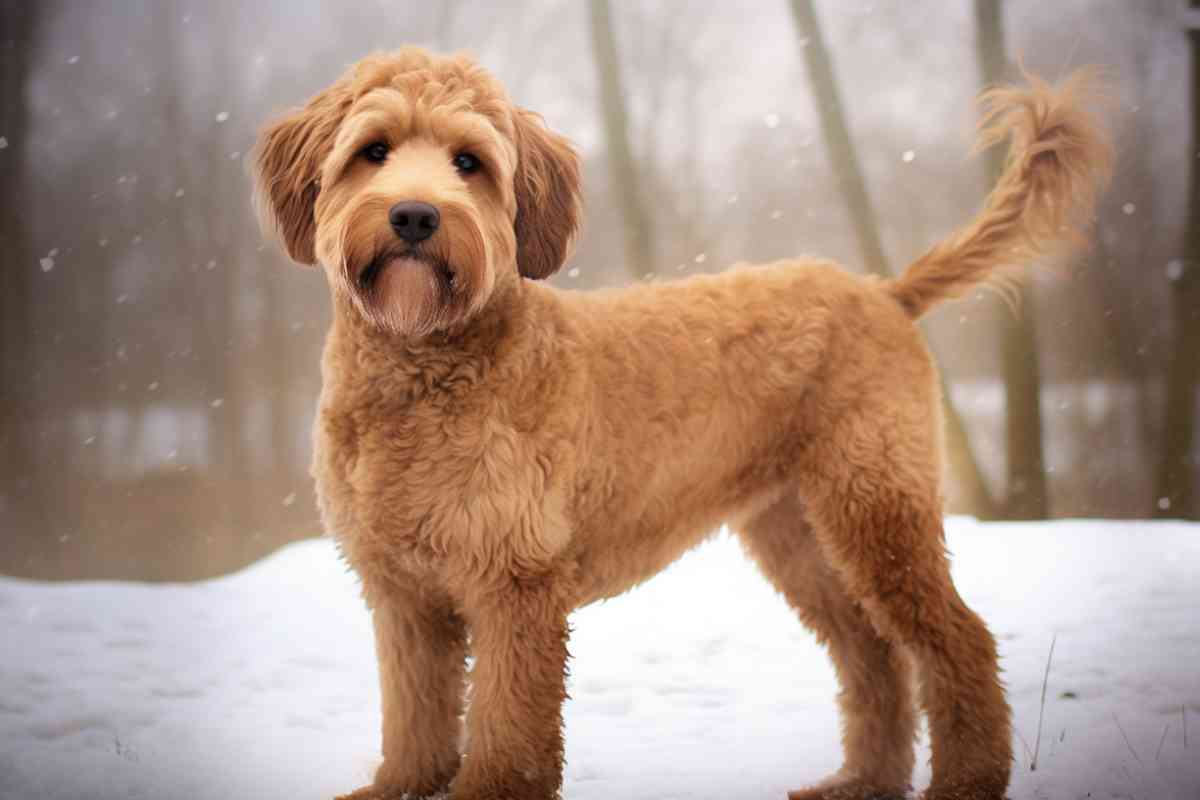
Training and Socialization
F1 mini Goldendoodles are known to be easy to train due to their intelligence and eagerness to please their owners. Training should begin early in their life to establish good behavior and obedience. Positive reinforcement training is highly recommended for these dogs. They respond well to treats, praise, and playtime. Consistency is key in their training, and owners should be patient and persistent.
Socialization is also important for F1 mini Goldendoodles. It helps them to become well-rounded and confident dogs. They should be exposed to different people, animals, and environments from a young age. This will help them to develop good social skills and prevent them from becoming anxious or fearful in new situations. Socialization can be achieved through regular walks, dog parks, and playdates.
Remember, the first Goldendoodles were bred to be service dogs. These little guys can do just about anything. Here are just a few ideas for training and exercising your F1 Mini Goldendoodle:
- Water Play: Goldendoodles often inherit a love for water from both their parent breeds. Swimming is a fantastic low-impact exercise, especially beneficial for those with joint issues. It provides a full-body workout without putting undue stress on the joints. Plus, it’s a refreshing way to cool down on hot days!
- Rally Obedience (Rally-O): Rally-O combines elements of obedience and agility. Dogs navigate a course with their owners, following signs that instruct them to perform various tasks. It’s a fun way to bond with your dog while reinforcing obedience commands.
- Agility Training: Agility is a high-energy sport where dogs navigate an obstacle course, including jumps, tunnels, and weave poles. It’s a fantastic way to channel a Mini Goldendoodle’s intelligence and energy. Plus, it strengthens the bond between dog and owner as they work together to complete the course.
- Dock Diving: If your Mini Goldendoodle loves water, dock diving might be the perfect sport. Dogs run off a dock and leap into a pool, competing for distance, height, or speed. It’s a thrilling activity that capitalizes on a dog’s natural love for jumping and swimming.
- Hunting and Retrieving: Given the Golden Retriever and Poodle’s background as a hunting dog, many Goldendoodles have a natural retrieving instinct. Training them in mock hunting exercises or fetch games can be both mentally and physically stimulating. You can use toys or specialized training dummies for these exercises.
- Brain Games: Mental stimulation is just as crucial as physical exercise. Puzzle toys, hide-and-seek games, and trick training can keep your Mini Goldendoodle’s mind sharp. Teaching them new commands or tricks is a great way to challenge them mentally.
- Regular Walks and Playtime: Never underestimate the value of a good old-fashioned walk or play session. It’s a chance for your Mini Goldendoodle to explore, sniff, and interact with their environment. Fetch, tug-of-war, and even just running around in a safe, open space can be great exercise.
- Socialization: Dog parks or playdates with other dogs can be a great way for your Mini Goldendoodle to socialize, play, and burn off energy. Just ensure that interactions are supervised and that playmates are well-matched in terms of size and play style.
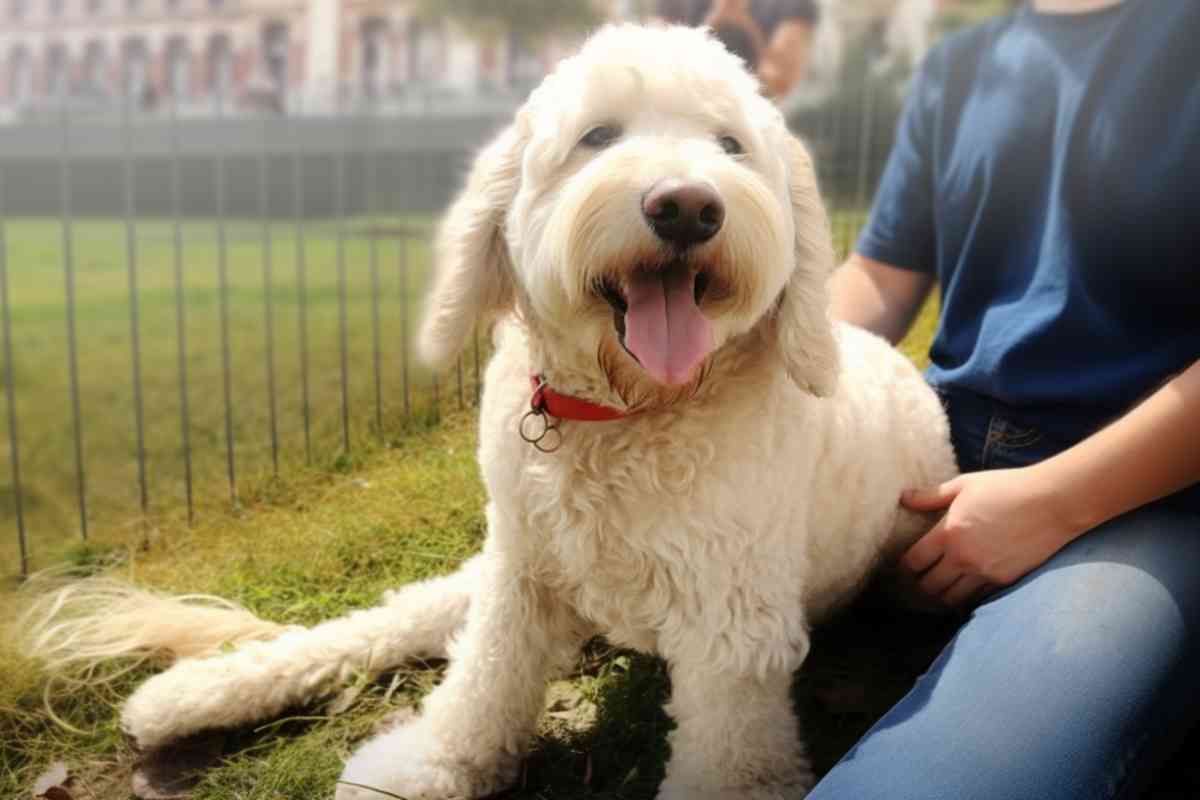
Breeding and Generations
| Generation | Genetic Makeup | Description |
|---|---|---|
| F1 | 50% Golden Retriever, 50% Poodle | First generation crossbreed |
| F1B | 25% Golden Retriever, 75% Poodle | Result of breeding an F1 Mini Goldendoodle with a purebred Miniature Poodle |
| F2 | 50% Golden Retriever, 50% Poodle | Result of breeding two F1 Mini Goldendoodles |
| F2B | 37.5% Golden Retriever, 62.5% Poodle | Result of breeding an F1 Mini Goldendoodle with an F1B Mini Goldendoodle |
The genetic makeup of each Goldendoodle generation affects the size and coat type of the Mini Goldendoodle. F1 Mini Goldendoodles tend to have wavy or straight hair that is low to moderate shedding. F1B Mini Goldendoodles have a curlier coat that is low shedding. F2 and F2B Mini Goldendoodles can have a variety of coat types and shedding levels depending on the genes they inherit from their parents.
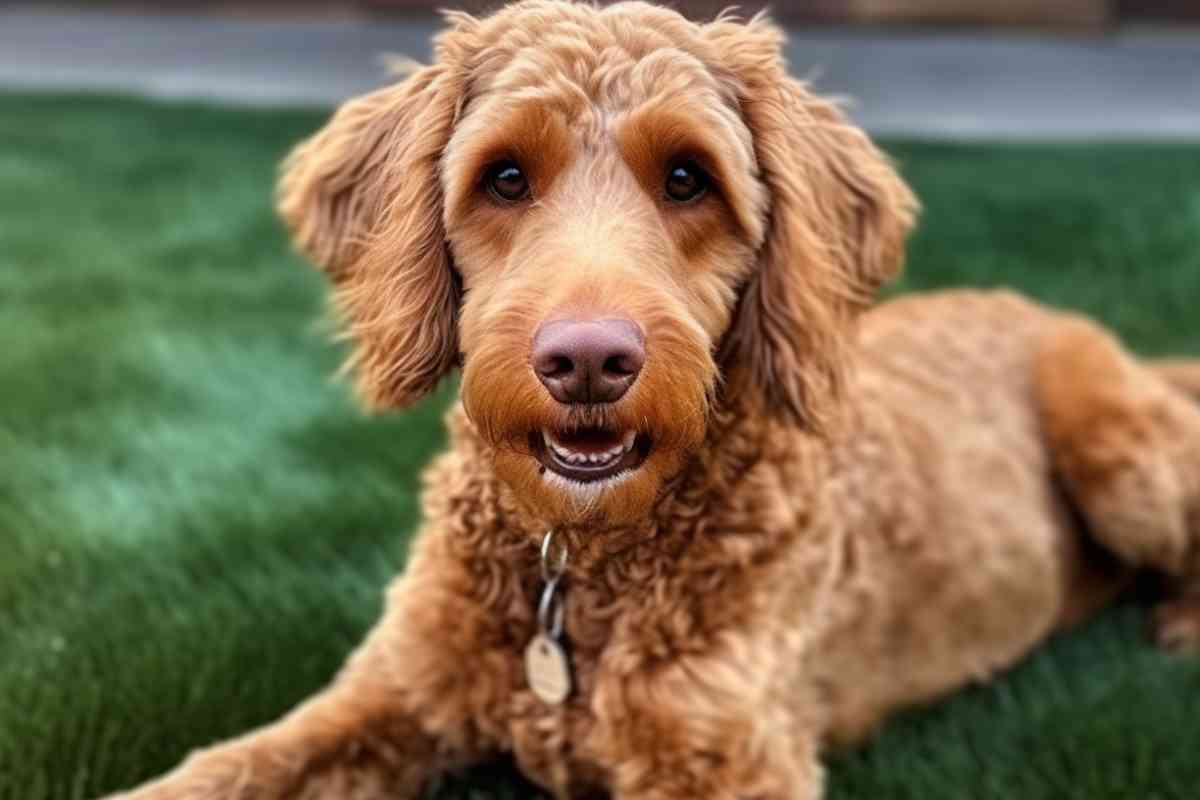
Choosing a Reputable Mini Goldendoodle Breeder
When considering bringing a Mini Goldendoodle into your home, it’s crucial to select a reputable breeder. A responsible breeder prioritizes the health and well-being of the dogs and provides a solid foundation for your new furry family member. Here’s a guide to help you make an informed choice:
1. Health Checks:
- Prioritize Health Testing: A responsible breeder will conduct health tests on both parent breeds. For Mini Goldendoodles, this should include checks for common issues in Poodles and Golden Retrievers, such as hip dysplasia, eye disorders, and heart conditions.
- Proof of Testing: Don’t just take their word for it. Ask for documentation or proof of health screenings and clearances.
2. Raised in a Home Environment:
- Home Setting: Puppies should be raised in a home environment, not in isolated kennels or cages. This early exposure to household noises, people, and other pets helps in their socialization.
- Interaction: Puppies that are regularly handled and interacted with by humans tend to be more sociable and well-adjusted.
3. Parents On-Site:
- Meet the Parents: Ideally, both parents should be on-site and available for you to meet. This gives you a chance to assess their temperaments, which can be an indicator of the puppy’s future behavior.
- Parental Behavior: Observe how the parents interact with the breeder and strangers. Are they friendly? Aggressive? Nervous?
4. Openness and Transparency:
- Ask Questions: A good breeder welcomes questions and will answer them patiently. They should be knowledgeable about the breed and its specific needs.
- Breed Knowledge: The breeder should provide guidance on caring for a Mini Goldendoodle, including diet, exercise, grooming, and health issues.
5. References and Reviews:
- Past Customers: Reputable breeders will have references from previous buyers. Reach out to them and inquire about their experience and the health and temperament of the dogs they purchased.
- Online Reviews: Check online forums, social media, and review sites for feedback on the breeder.
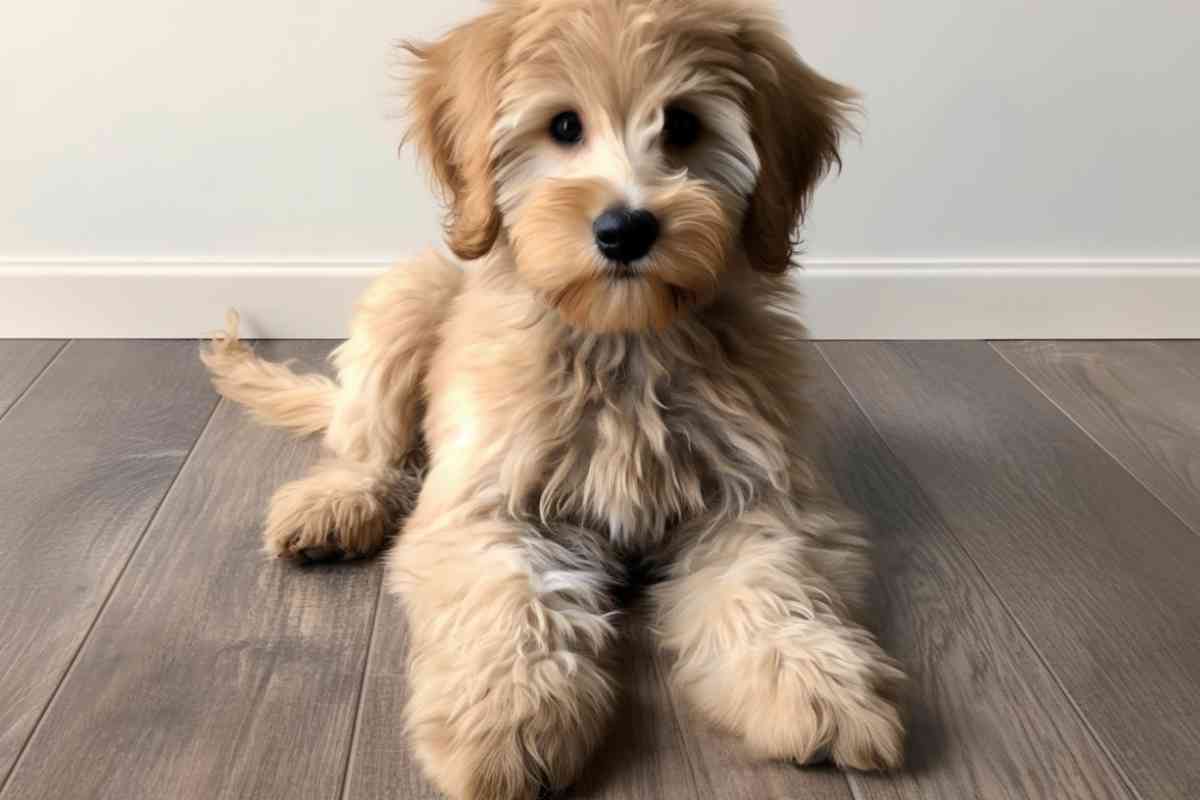
6. Contract and Health Guarantee:
- Clear Contract: A responsible breeder will provide a clear contract outlining the responsibilities of both the buyer and the seller. This might include spaying/neutering requirements, return policies, and health guarantees.
- Health Guarantee: Many breeders offer a health guarantee for a certain period, ensuring the puppy is free from congenital defects.
7. Post-Purchase Support:
- Ongoing Support: A good breeder will be available for questions or concerns even after you’ve taken your puppy home. They should be a resource for you throughout the dog’s life.
8. Ethical Practices:
- No Overbreeding: Be wary of breeders who always have puppies available or breed their dogs continuously. This can be a sign of a puppy mill.
- Age of Breeding: The parent dogs should be of appropriate age for breeding, not too young or old.
Avoiding Puppy Mills and Unscrupulous Breeders:
- Avoid Online Purchases: While many reputable breeders have websites, be wary of sites that allow you to purchase a puppy with a simple click. Always insist on visiting the breeder in person.
- Check for Registration: While registration isn’t a guarantee of quality, breeders who register their dogs with recognized organizations are more likely to adhere to certain standards.
- Meet the Parents: Always ask to see the puppy’s parents. This gives you a chance to assess their health and temperament, which can be indicative of the puppy’s future health and behavior.
- Ask Questions: A reputable breeder will welcome questions and be transparent about their breeding practices.
Cost of a Quality Goldendoodle
The price of a well-bred Mini Goldendoodle can vary based on factors like location, lineage, and demand. A quality Goldendoodle from a reputable breeder typically costs between $1,500 to $3,500.
However, prices can fluctuate, so it’s essential to do current market research. Remember, while this might seem steep, investing in a healthy puppy from a responsible source can save you money and heartache in the long run.
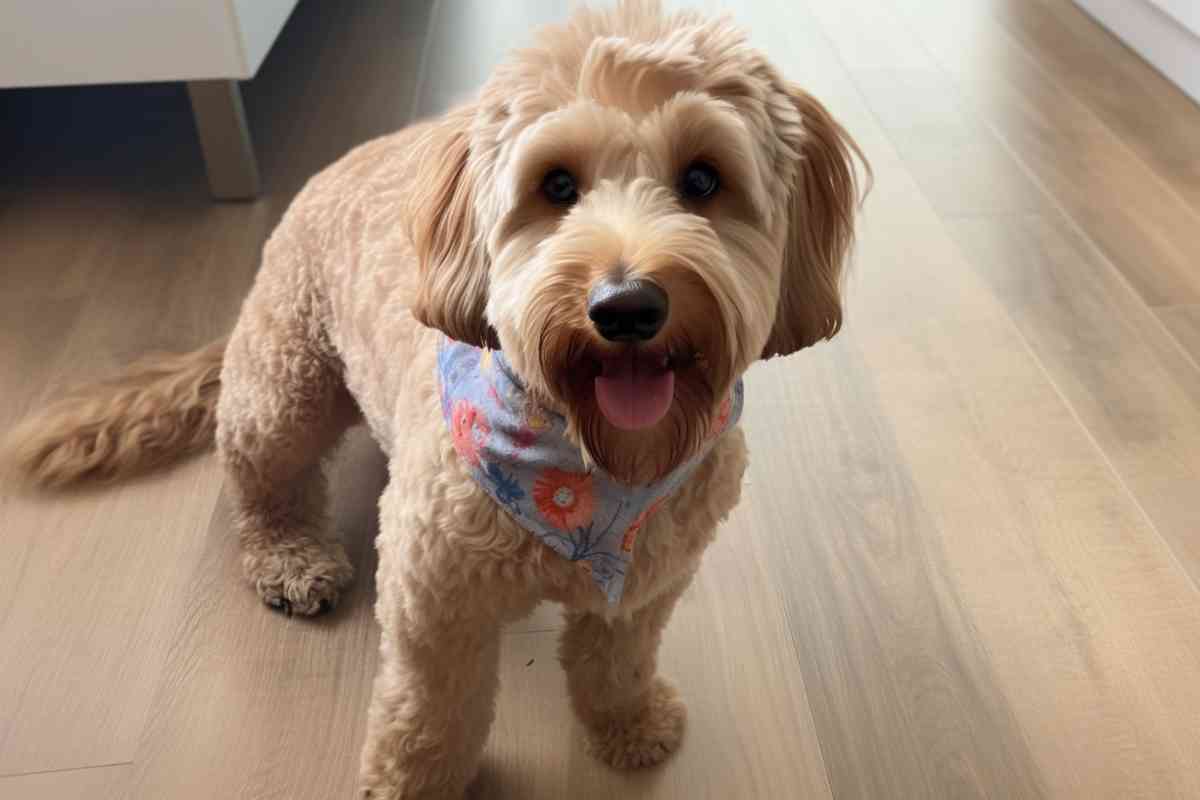
Frequently Asked Questions
What is the average size of an F1 mini Goldendoodle?
The average size of an F1 mini Goldendoodle is between 13 to 20 inches in height and 15 to 35 pounds in weight. However, it’s important to note that size can vary depending on the genetics of the parents.
How much does an F1 mini Goldendoodle typically weigh?
An F1 mini Goldendoodle typically weighs between 15 to 35 pounds. However, some may weigh more or less depending on their genetics.
What is the temperament of an F1 mini Goldendoodle?
This hybrid breed is known for their friendly, outgoing, and social nature. They are intelligent dogs that are easy to train and make great family pets. However, as with any breed, individual temperament can vary.
Are there any differences between F1 mini Goldendoodles and F1B mini Goldendoodles?
Yes, there are differences between F1 mini Goldendoodles and F1B mini Goldendoodles. F1B mini Goldendoodles are a cross between an F1 mini Goldendoodle and a purebred Poodle. This means that they may have more Poodle-like traits such as hypoallergenic coats and a more reserved temperament.
How much should I expect to pay for an F1 mini Goldendoodle?
The cost of an F1 mini Goldendoodle new puppy can vary depending on the breeder, location, and demand. On average, you can expect to pay between $1,500 to $3,000.
What colors do F1 mini Goldendoodles come in?
F1 mini Goldendoodles can come in a variety of colors including cream, gold, red, apricot, chocolate, and black from the poodle genes. However, it’s important to note that color can vary depending on the genetics of the parents. Generations of Goldendoodle typically express more color variation as the years go by.
| Color | Description |
|---|---|
| Cream | Light, almost white color |
| Gold | A rich golden color |
| Red | Deep, reddish-brown color |
| Apricot | Lighter than red, with a pinkish hue |
| Chocolate | Dark brown color |
| Black | Solid black color |
It’s important to note that not all breeders may have all colors available and some colors may be more rare or in higher demand, which can affect the price.